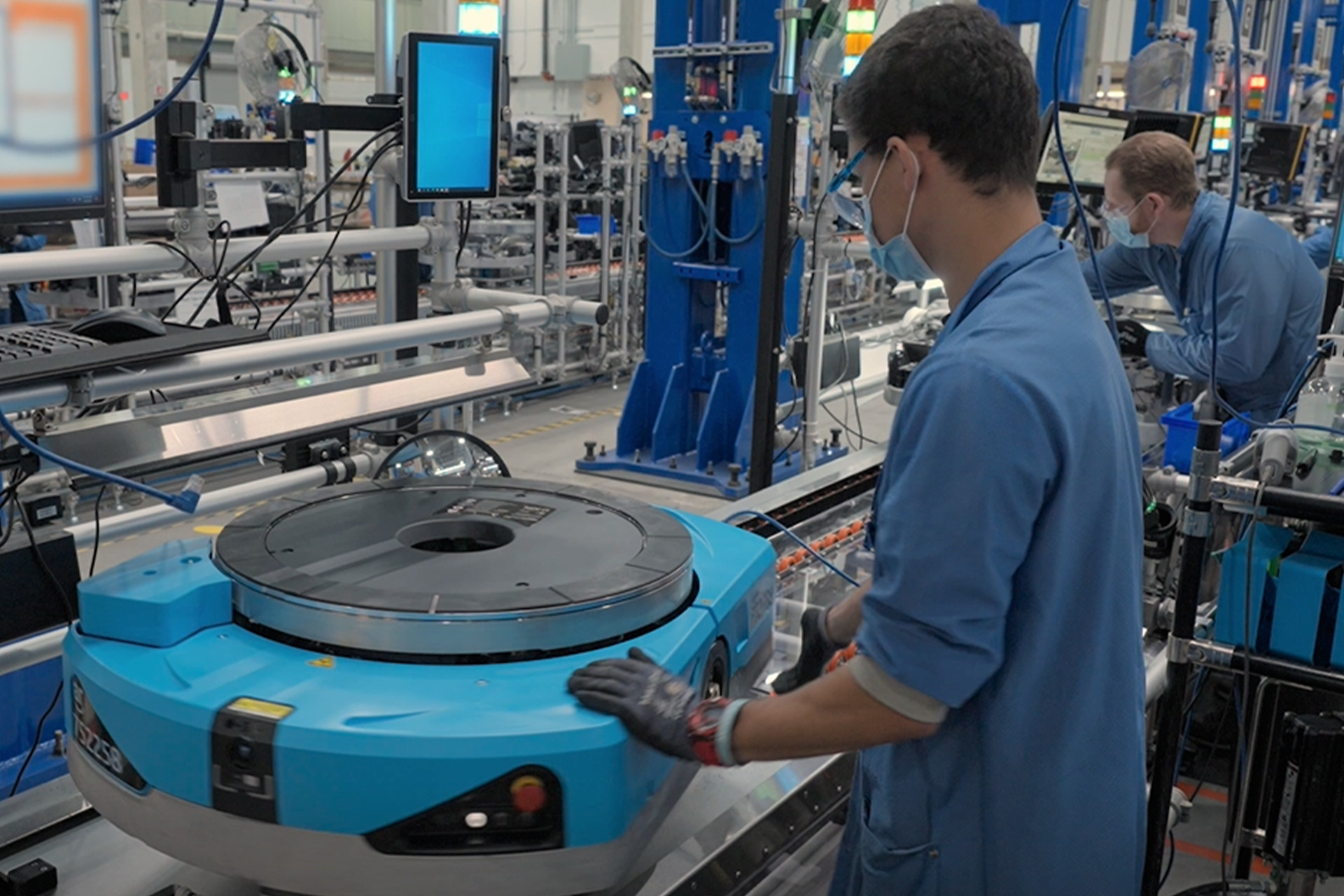Economic activity in the manufacturing sector kept growing in September but slipped from August, according to the Institute for Supply Management.
The figure, he noted, indicates expansion in the overall economy for the 28th month in a row after contraction in April and May 2020 but is the lowest since May 2020, when it registered 43.5%.
“The New Orders Index returned to contraction territory at 47.1%, 4.2 percentage points lower than the 51.3% recorded in August,” Fiore said. “The Production Index reading of 50.6% is a 0.2-percentage point increase compared to August’s figure of 50.4%. The Prices Index registered 51.7%, down 0.8 percentage points compared to the August figure of 52.5%. This is the index’s lowest reading since June 2020: 51.3%. The Backlog of Orders Index registered 50.9%, 2.1 percentage points lower than the August reading of 53%. After a single month of expansion, the Employment Index contracted at 48.7%, 5.5 percentage points lower than the 54.2% recorded in August. The Supplier Deliveries Index reading of 52.4% is 2.7 percentage points lower than the August figure of 55.1%. This is the index’s lowest reading since before the coronavirus pandemic: 52.2% in December 2019. The Inventories Index registered 55.5%, 2.4 percentage points higher than the August reading of 53.1%. The New Export Orders Index contracted at 47.8%, down 1.6 percentage points compared to August’s figure of 49.4%. This is the index’s lowest reading since June 2020, when it registered 47.6%. The Imports Index remained in expansion territory at 52.6%, 0.1 percentage point above the August reading of 52.5%.”
Fiore pointed out that the manufacturing sector in the United States “continues to expand, but at the lowest rate since the pandemic recovery began. Following four straight months of panelists’ companies reporting softening new order rates, the September index reading reflects companies adjusting to potential future lower demand. Demand eased, with the New Orders Index returning to contraction, the New Export Orders Index in contraction for a second consecutive month, Customers’ Inventories Index remaining at a low level but as close as it’s been to an ‘about right’ reading since early in the pandemic and the Backlog of Orders Index approaching contraction. Consumption, measured by the Production and Employment indexes, declined during the period, with a combined negative 5.3-percentage point impact on the Manufacturing PMI calculation. The Employment Index returned to contraction after one month of expansion, and the Production Index increased by 0.2 percentage points, staying in growth territory, but at a modest level. Many Business Survey Committee panelists’ companies are now managing headcounts through hiring freezes and attrition to lower levels, with medium- and long-term demand more uncertain. Inputs, defined as supplier deliveries, inventories, prices and imports, accommodated growth. The Supplier Deliveries Index reached an appropriate tension level, and the Inventories Index increased as panelists’ companies continued to manage the total supply chain inventory. The Prices Index decreased for a sixth straight month and is not far from contraction territory, and the Imports Index modestly grew.”
Companies ISM advisory panelists work for slowed hiring activity, Fiore indicated.
“Month-over-month supplier delivery performance was the best since December 2019,” he pointed out. “Prices growth slowed notably, with the index at 60% or lower, for the third consecutive month, and lead times continue to ease for capital equipment and production materials. Markedly absent from panelists’ comments was any large-scale mentioning of layoffs. This indicates companies are confident of near-term demand, so primary goals are managing medium-term head counts and supply chain inventories.”
Nine manufacturing industries reported growth in September from August, with gains in Nonmetallic Mineral Products; Machinery; Plastics & Rubber Products; Miscellaneous Manufacturing; Apparel, Leather & Allied Products; Transportation Equipment; Food, Beverage & Tobacco Products; Computer & Electronic Products, and Electrical Equipment, Appliances & Components. Seven industries reported contraction in September versus August: Furniture & Related Products; Textile Mills; Wood Products; Printing & Related Support Activities; Paper Products; Chemical Products, and Fabricated Metal Products.





